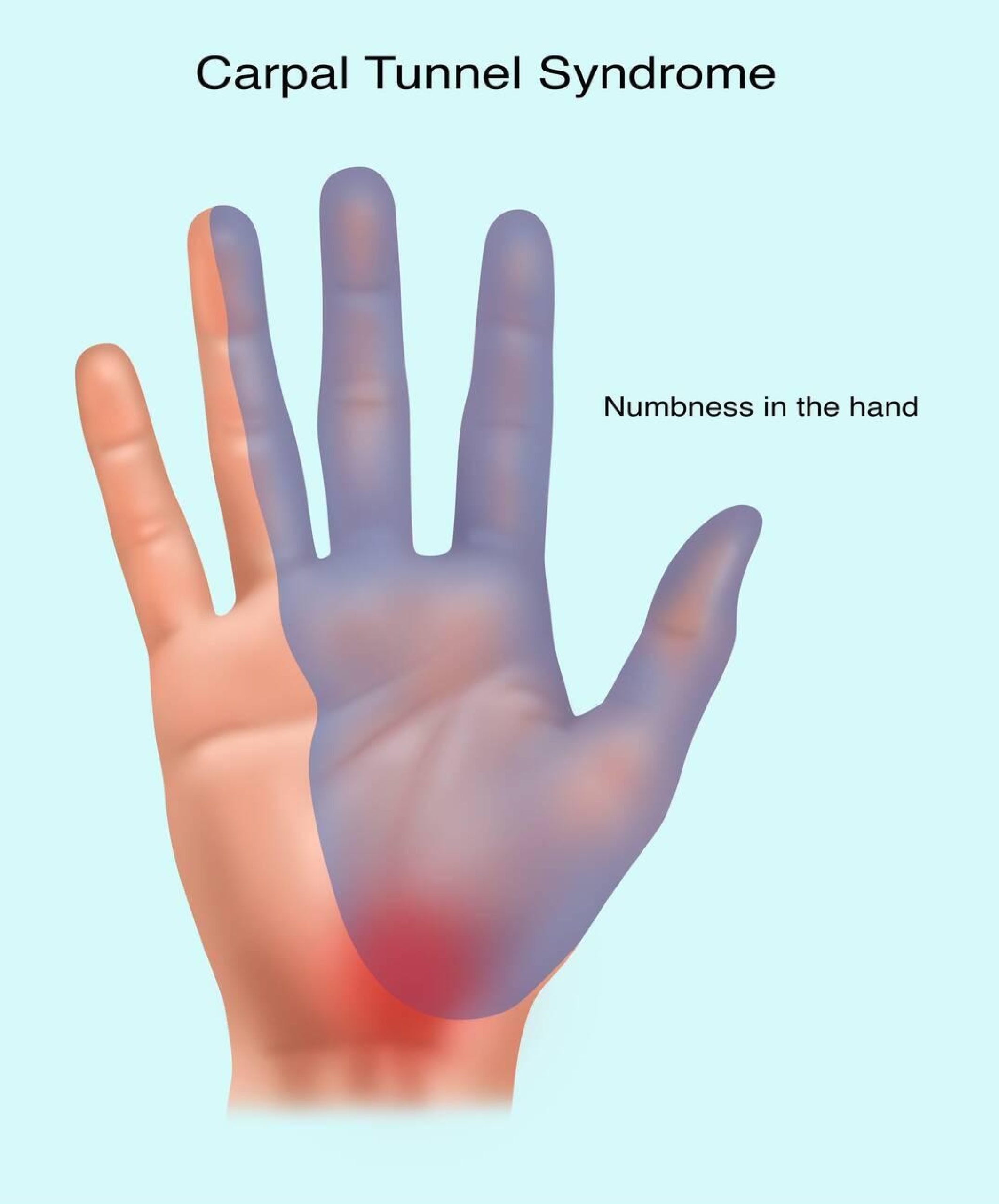Is Carpal Boss the Same as Carpal Tunnel? Exploring Two Hand Conditions
Hand conditions can be incredibly frustrating, affecting your ability to perform daily tasks and enjoy life. Two common conditions that often cause confusion are Carpal Boss and Carpal Tunnel Syndrome. While both involve discomfort in the hand and wrist, they are distinct conditions with different causes, symptoms, and treatments. In this article, we’ll explore the differences between Carpal Boss and Carpal Tunnel Syndrome, helping you understand their unique characteristics and how you can find relief. If you’re struggling with either of these conditions, Veda Medical is here to provide expert care and treatment options tailored to your needs.
What is Carpal Boss?
Carpal Boss, also known as carpometacarpal bossing, is a condition characterized by a bony prominence or bump on the back of the hand where the long bones of the hand (metacarpals) meet the small wrist bones (carpals). This condition typically occurs near the base of the index or middle finger and can cause localized pain, tenderness, and limited movement in the affected area.
Carpal Boss often develops due to repetitive hand movements or joint stress, which leads to the formation of extra bone. It’s common in individuals who engage in activities requiring frequent wrist motion, such as athletes, musicians, and manual laborers. While Carpal Boss can be uncomfortable, it is generally not as disabling as other hand conditions.
Symptoms of Carpal Boss:
- A noticeable bump on the back of the hand near the base of the finger
- Pain or discomfort in the area, especially with wrist movements
- Limited range of motion in the affected joint
- Tenderness to touch
- Swelling around the bony prominence
What is Carpal Tunnel Syndrome?
Carpal Tunnel Syndrome (CTS) is a more well-known condition that affects the hand and wrist. Unlike Carpal Boss, which involves a bony growth, Carpal Tunnel Syndrome occurs when the median nerve is compressed as it passes through the narrow carpal tunnel in the wrist. This compression can lead to a range of symptoms, including pain, numbness, tingling, and weakness in the hand and fingers.
Carpal Tunnel Syndrome is often associated with repetitive hand movements, such as typing, sewing, or using vibrating tools. It can also be linked to certain medical conditions, such as diabetes, arthritis, or hypothyroidism. If left untreated, CTS can significantly impact hand function and quality of life.
Symptoms of Carpal Tunnel Syndrome:
- Numbness or tingling in the thumb, index, middle, and ring fingers
- Pain that radiates up the arm or into the palm
- Weakness in the hand, making it difficult to grip objects
- A sensation of the fingers “falling asleep,” especially at night
- Difficulty with fine motor tasks, such as buttoning a shirt or holding a pen
Key Differences Between Carpal Boss and Carpal Tunnel Syndrome:
1. Location of the Condition:
- Carpal Boss affects the back of the hand near the base of the fingers, where the long bones meet the wrist bones. It is characterized by a visible bony bump.
- Carpal Tunnel Syndrome affects the wrist, specifically the median nerve as it passes through the carpal tunnel. It primarily impacts the thumb, index, and middle fingers.
2. Underlying Cause:
- Carpal Boss is caused by the development of extra bone due to repetitive stress or joint wear and tear. It is a structural issue rather than a nerve-related problem.
- Carpal Tunnel Syndrome is caused by the compression of the median nerve, often due to inflammation or swelling within the carpal tunnel. It is a nerve compression issue rather than a bone-related problem.
3. Symptoms:
- Carpal Boss symptoms include a visible bump, localized pain, tenderness, and limited range of motion in the affected joint.
- Carpal Tunnel Syndrome symptoms include numbness, tingling, pain, and weakness in the hand and fingers, often with radiating pain into the arm or palm.
4. Treatment Approaches:
- Carpal Boss treatment may involve conservative measures such as rest, splinting, pain management, and physical therapy. In some cases, surgery may be necessary to remove the bony prominence.
- Carpal Tunnel Syndrome treatment may include wrist splints, anti-inflammatory medications, corticosteroid injections, and in severe cases, surgery to relieve nerve compression.
Diagnosis and Treatment at Veda Medical
If you’re experiencing hand pain, discomfort, or other symptoms that may be related to Carpal Boss or Carpal Tunnel Syndrome, it’s important to seek professional medical advice for an accurate diagnosis. At Veda Medical, we specialize in diagnosing and treating a wide range of hand and wrist conditions, including Carpal Boss and Carpal Tunnel Syndrome.
Comprehensive Diagnosis:
At Veda Medical, our skilled medical team will conduct a thorough evaluation, including a detailed medical history and physical examination. We may also use diagnostic imaging, such as X-rays or MRIs, to assess the structural integrity of the hand and wrist and confirm the diagnosis.
Personalized Treatment Plans:
Once a diagnosis is made, our team will work closely with you to develop a personalized treatment plan tailored to your specific condition and needs. Depending on the severity of your symptoms, treatment options may include:
Conservative Treatments:
- Rest and Activity Modification: Taking a break from activities that aggravate your symptoms can help reduce pain and inflammation.
- Splinting or Bracing: Wearing a splint can provide support and relieve pressure on the affected area, promoting healing and preventing further damage.
- Pain Management: Over-the-counter pain relievers or corticosteroid injections may be recommended to alleviate pain and reduce inflammation.
- Physical Therapy: Targeted exercises and stretches can improve hand and wrist strength, flexibility, and function.
Surgical Intervention:
In cases where conservative treatments are not effective, surgical options may be considered. For Carpal Boss, surgery may involve removing the bony prominence to relieve pain and restore function. For Carpal Tunnel Syndrome, surgery may involve releasing the compressed median nerve to alleviate symptoms and prevent long-term damage.
Why Choose Veda Medical?
Veda Medical is dedicated to helping our patients achieve optimal health and well-being through state-of-the-art medical care and personalized treatment plans. Our team of experienced physicians, surgeons, and therapists is committed to providing compassionate and evidence-based care to help you regain hand function and improve your quality of life.
Whether you’re dealing with Carpal Boss, Carpal Tunnel Syndrome, or another hand condition, you can trust Veda Medical to deliver the highest quality care. Our modern facilities and cutting-edge technology ensure that you receive the best possible treatment, while our patient-centered approach ensures that your unique needs and goals are always our top priority.
Take the First Step Toward Relief Today
Don’t let hand pain and discomfort hold you back from enjoying life. If you’re experiencing symptoms of Carpal Boss, Carpal Tunnel Syndrome, or any other hand condition, contact Veda Medical today to schedule a consultation. Our expert team is here to help you find relief, restore hand function, and improve your overall well-being. Take the first step toward a pain-free future—call Veda Medical now and let us be your trusted partner in health.
Contact Veda Medical:
- Phone: 210-566-8332/210-361-6617
- Location: 12315 Judson Rd., Live Oak, TX 78233
- Email: office@vedamedical.com
At Veda Medical, we’re here to serve you. From hand and wrist conditions to comprehensive medical care, we are dedicated to helping you achieve your health goals with personalized and compassionate care. Reach out today, and let us guide you on your journey to optimal health and well-being.





